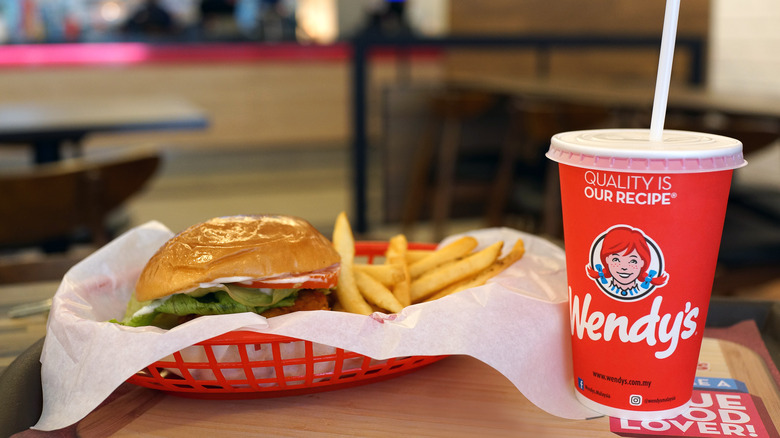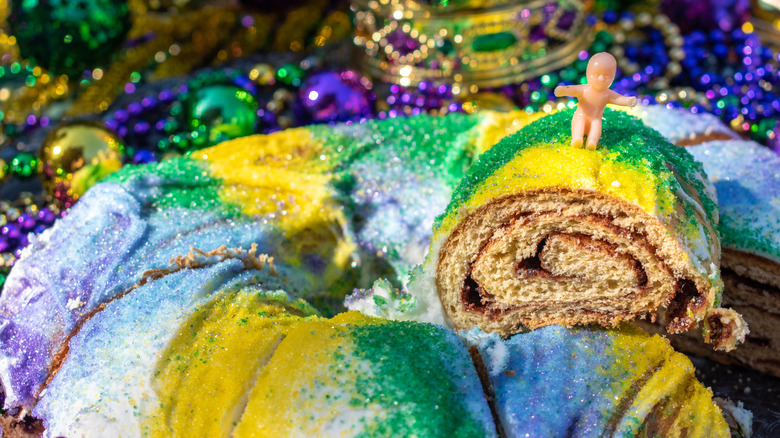When Did People Start Hiding Engagement Rings In Food?
When it comes to marriage proposals, couples often feel pressured to get the occasion just right. In addition to creating a romantic atmosphere, many people also look for novel ways to ask for their partner's hand in marriage. Headlines from recent years include a man who chose to pop the question during a rock-climbing expedition, an activity his then-girlfriend loved. In another instance, a man created a scavenger hunt that spanned several states, which culminated in a proposal in front of his partner's entire family.
According to a survey conducted by Hitched, most people prefer a more conventional (and less labor-intensive) experience. Overall, survey respondents claimed that popping the question during a holiday getaway is the preferred method, since all involved are likely to be in great spirits. In second place is proposing on a person's birthday, which hopefully ends in the gift of marital bliss. As for third place, 9% of the 4,000 people surveyed claimed that proposals are best during romantic meals. While this option is ideal in terms of atmosphere, it does lack an element of surprise. Maybe that's why some couples are making questionable decisions on where to hide the ring.
Dinner with a little something extra
While engagement trends have changed quite a bit over the years, engagement rings are seemingly here to stay. Some say the practice first began in Ancient Rome, when it was common for married women to wear rings adorned with tiny keys, which signaled that they "belonged" to their husbands. Although this patriarchal practice would likely be looked down upon today, engagement rings remain a symbol of love and affection between two people. As for how these rings are presented to the other party, there's one popular practice that might not totally be advisable.
Hiding engagement rings in food is a surprisingly common practice considering the many ways it can go wrong. And while it's hard to pin down the exact time and place where this trend got started, Today reported on the follies of hiding jewelry in food as far back as 2009. In this case, a man had the not-so-great idea to hide his girlfriend's ring in a Wendy's Frosty while on an outing with friends. The couple's friends (who knew about the proposal) challenged the woman to eat the ice cream treat as quickly as possible, which led to her swallowing the ring without even realizing it. The ring was "retrieved" a few days later, and the couple had a fun story to tell their loved ones. Surprisingly, the practice of hiding inedible objects inside food is a lot more common than you might think.
Waiter, there's a baby in my cake
King Cake is a New Orleans food tradition tied to Mardi Gras. It's inspired by the story of Jesus and the three wise men who provided the biblical tot gifts on the day of his birth. A delicious combination of cinnamon roll and coffee cake, and adorned with colorful icing, the most famous ingredient in King Cake is one that you can't eat. It's tradition to include a tiny plastic baby in the mix, and whoever is lucky enough to find it must provide next year's King Cake.
Heading over to Bulgaria, banitsa is a traditional pastry preparation that consists of flaky phyllo dough and cheese filling. However, the recipe can also be altered to include vegetables, such as cabbage, or even sweet ingredients. Many banitsas also include special additions intended to provide the recipient with good luck. In addition to coins, banitsas can also contain charms imbued with good fortune or little slips of paper featuring wishes. Here's hoping that the luck afforded by these items also protects the eaters from inadvertently swallowing inedible objects.


